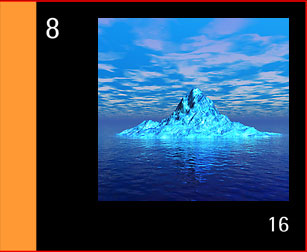|
|
|
|
|
|
|
|
|
|
|
|
 |
|
|
|
|
|
 |
|
|
Discovered : by Joseph Priestley in Wiltshire, England and independently by C.W. Scheele in Upssala, Sweden in 1774
Origin : The name is derived from the Greek ‘oxygenes’, meaning acid forming.
Description :
A colourless, odourless gas that makes up 21% of the atmosphere, which is half-way between 17% (below which we could not breathe) and 25% (above which all organic material is highly flammable). The element is essential for all forms of life since it is a constituent of DNA, and it comprises over half the weight of the average person. Indeed it is the most common element in the Earth’s crust, in the form of silicon-oxygen minerals, and in the sea since it accounts for 89% of the weight of water. Oxygen gas is fairly soluble in water, which makes life in rivers, lakes and oceans possible. We breathe in oxygen so that it can react with energy stores in our bodies to provide the heat and motion that keeps us alive, and we return it to the atmosphere as carbon dioxide. Industrially, oxygen is produced on a large scale from liquid air, and used for steel making, metal cutting (oxycetalene torches) and by the chemicals industry.
Image :
Ozone and iced water.
|
|
|
|
|
|
 |
|
|
|
|
 |
|
|
|
|
|
|
 |
|
|
|
|
|
|
|
|
 |
|
|
|
|
|
|
|
|
|
|
|
|
|
|
|
|
|
 |
|
|
|
|
 |
|
|